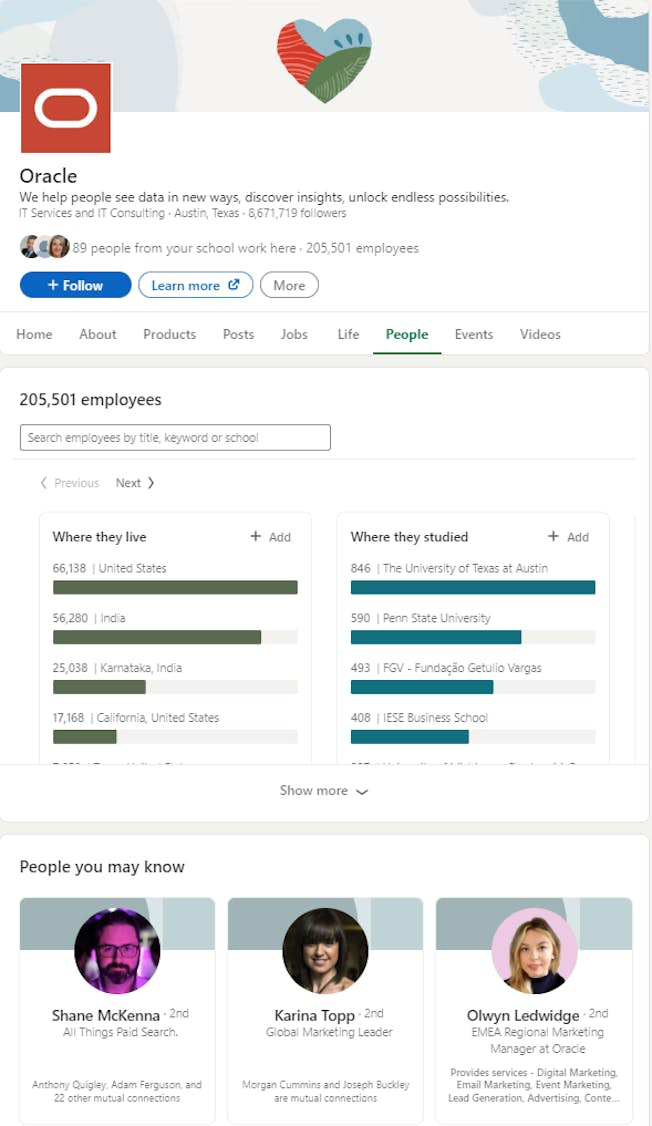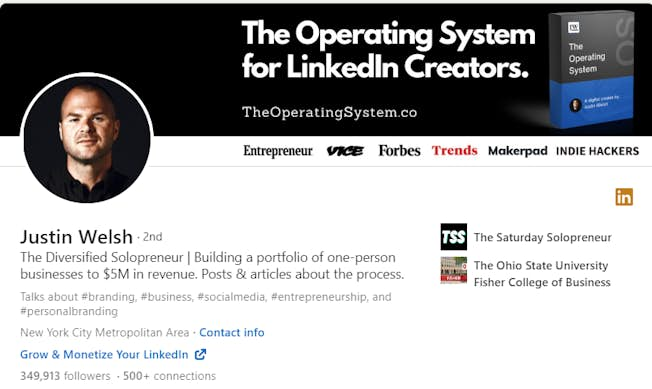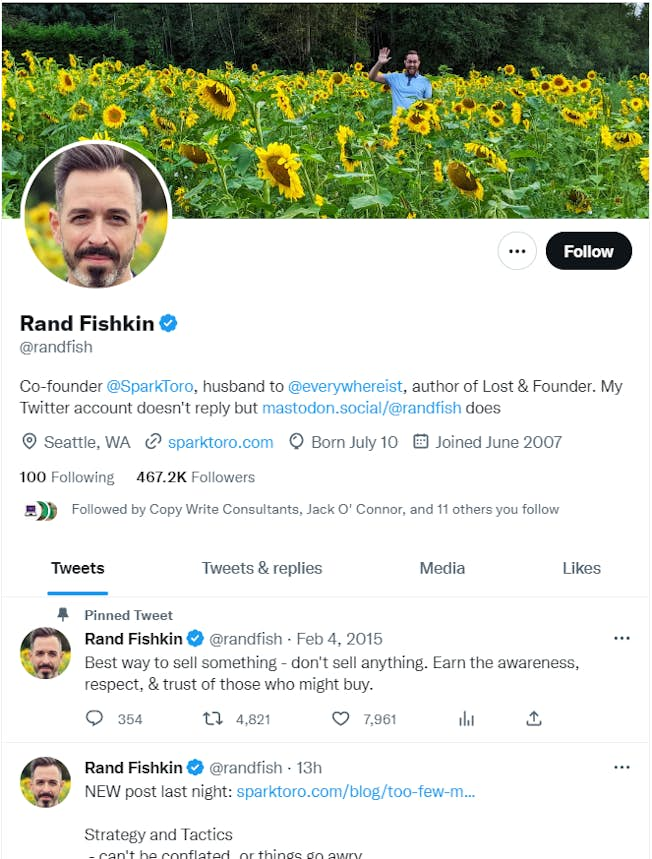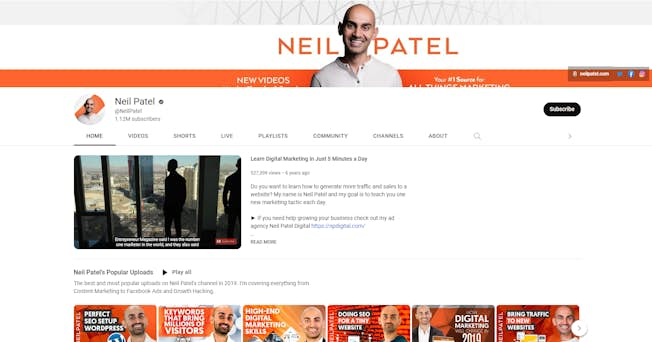As prospects go online to find information and communicate, businesses are turning to social media to engage and influence new and existing customers.
Social selling is just that, using online channels to target prospects and build relationships. It’s a lifeline for salespeople looking to find leads and make connections with the right people.
According to LinkedIn’s ‘Global State of Sales 2022’ report, about a third of sellers have closed deals over $500,000 without ever meeting the buyer face to face. Meantime, 89 percent of customers say they are more likely to consider a brand if a seller changes their way of thinking.
If you’re not already using social selling in your business, then you’re losing out on an opportunity to drive online networking and use new sales techniques. Read on to learn how to implement a social selling strategy and get inspiration from some great examples.
What is Social Selling?
Social selling is when a company or individual uses social media networks to connect with prospects, build connections and drive leads.
In the words of Julie Atherton, on the DMI podcast: “social selling is about supercharging your personal profile, and building relationships that really last a long time, and are mutually beneficial to you and to the people that you're trying to sell to”.
Many salespeople use social selling to help reach their quotas. The technique helps to get people into the sales funnel so you can provide relevant information at the right time and drive a purchase.
While social selling involves using social media to engage, another term often used in this context is digital selling, a broader version of sales that uses online technologies and sales tech. This includes channels such as:
- Websites (e-commerce)
- Chatbots
- Data analytics
- A Customer Relationship Management system
- Automation
- Online presentations or webinars
- Sales intelligence
How do I become a social seller?
The advantage of social selling is that it’s easy to get started. Your business and sales employees are probably already using social media, so it’s just about leveraging those networks as a sales channel.
So, how do I start social selling? Let’s look at a few simple steps:
Choose your network
Not all social networks are created equal. What works for one business, may not work for another so look at engagement rates and where your audience is. For example, if you’re a B2B business, LinkedIn may help you make connections whereas Twitter can help you find and follow people.
Create or refresh your profile
How you are presented to the outside world is important, so create or update your profile to make it professional and relevant. Check out our guidelines on how to improve your profile on LinkedIn.
Make a target list
It’s important to know who you are targeting, so make a list of companies or individuals that you want to connect with.
Do your research
76 percent of top performers say they ‘always’ do research before reaching out to prospects (compared to just 47 percent for other sellers) according to LinkedIn’s sales report (cited above). So take your time and research.
Join social media groups
There are lots of social media groups out there and many are niche and could be relevant to your business. Request to join those groups or even set one up that would be useful to customers or clients.
Use social listening
Social listening will help you to monitor and track people or companies online. You can track conversations, see what customers are saying or even keep up with your competitors.
Post relevant content and be consistent
Start by finding relevant and interesting content that will interest your audience. This doesn’t have to be from your company, it could be a media article or podcast, or webinar. It’s all about providing value to the right people.
Identify social selling metrics
To monitor performance, it’s important to define metrics to track your selling activity on social media. This could be LinkedIn’s SSI (social selling index), content engagement rate, or message response rate.
These steps will get you started as a social seller and help you generate leads and nurture prospects online.
Is social selling good business?
Social sellers get good results. It’s a fact.
The sales tactic not only helps your business and sellers to build connections but it helps with your bottom line - revenue. Here are some statistics to demonstrate the efficacy of social selling.
- 61 percent of organizations engaged in social selling report a positive impact on revenue growth - Sales for Life
- In many industries, over half of a sales rep’s quota is made up of social selling sources or influenced deals - LinkedIn
- Audiences exposed to brand and acquisition messages on LinkedIn are six times more likely to convert - LinkedIn
In addition, customers are active on social media with 68 percent having purchased directly from social platforms, according to Sprout Social. This is a number that’s only expected to grow with the adoption of social commerce and TikTok’s growth.
This graphic shows the common ways that consumers find a product. Nearly half say it's due to seeing a targeted ad while 40 percent see an organic posting and 34 percent research on social.

Is social selling MLM?
Social selling relies on networking and engaging via social channels and should not be confused with Multi-level Marketing (MLM), a method of selling products directly to consumers using independent sales representatives that’s got some bad press for its unsavory tactics.
Under the MLM model, sellers are not employed by the company but are individual business owners who recruit distributor networks to sell. MLM companies rely on this network to make money.
How to Implement a Social Selling Strategy
A social selling strategy will help you plan how to target, connect with, and influence customers and prospects.
It’s important that all sellers in your organization are working towards the same goals and that there is consistency in the approach and tone.
Here are some steps to plan and implement a social selling strategy, including tips for building a strong online presence and engaging with potential customers on social media.
Establish your presence on the right social media platforms
Identify which social media platforms your target audience is active on, and establish a presence on those platforms. This will give you a platform to connect with potential customers and build relationships.
For example, your audience may like visual content and be active on Instagram. While just posting an image may drive engagement, you should be aware of the different Instagram video formats you can use.
Whichever platform suits you, research what your audience is interacting with and what your competitors are doing.
Optimize your social media profiles
Like any social seller, businesses also need to optimize their social media profiles. A great profile should include:
- Keywords related to your industry
- A professional profile picture and cover photo
- A clear and concise bio
- Relevant hashtags
- A link to your website or landing page
- Contact details
- Use an identifiable handle
- Pin your best or most engaged content to the top of your profile
Create valuable content
Create valuable content that addresses your target audience's pain points and provides solutions to their problems.
You should know what issues or obstacles your customers face from developing a buyer persona and through interactions with customer service or your sales team. Put these front and center and see how you can address them and add value to your content.
The content you can create includes:
- Blogs
- Original research or whitepapers
- Ebooks
- Webinars
- Podcasts
- Videos
- Live video
Then share this content on your social media profiles and in relevant groups to attract and engage potential customers.
Download our ‘Buyer Persona Template’ if you want help understanding your audience.
Connect with potential customers
Use social media's search and discovery features to find and connect with potential customers. You can also use social listening or intelligence to find and target prospects. This will help you to monitor online conversations and digital behavior while keeping up with trends to stay informed and personalize communications.
For example on LinkedIn, it’s as simple as typing a person’s name or company into the search box. You can also browse employees in a company’s profile to find out more about their education, positions, and career path.
There’s also a ‘People You May Know’ section that directs you to individuals you may make connections with. Here’s an example from Oracle.

Look for opportunities to engage in conversations and add value to their lives.
Build relationships
Once you've connected with potential customers, focus on building relationships by providing value and being helpful. Share your expertise and offer to help them with their problems. You can also do this through online social groups.
This can be through sharing content such as original research or a blog that covers an issue they are facing. Or it could simply be a message to reach out. Curated or third-party content can also be useful here.
An article from the New York Times that’s relevant to your industry or theirs could show you as someone with knowledge and a budding industry leader.
Track and measure your success
Track and measure your social selling efforts by monitoring your follower growth, engagement levels, and conversions.
You can also track brand mentions and ad campaigns to understand what content is working. Use this data to adjust and improve your strategy over time.
Bear in mind that analytics are different for social media platforms, so familiarize yourself with the ones you use most to ensure you get insights from the data. Or ask your marketing team to help.
Optimize your sales process
Use all information gathered during the social selling process to optimize your sales process. This will help you to personalize your approach and increase conversion rates.
A CRM system is crucial here as it can help you to keep track of all information on your prospects and any interactions. Make sure to use it consistently to ensure you get the most out of it - here’s a guide to the most popular CRM options.
You can also find ways to automate the social selling process such as invoicing or customer onboarding.
5 Examples of Successful Social Selling
Here are five examples of individuals and companies that have successfully used a social selling approach to drive awareness and sales.
1. Using LinkedIn to build a personal brand - Justin Welsh

Justin Welsh once built Annual Recurring Revenue companies and raised money for venture capital. Today, he uses social selling to advise entrepreneurs and create digital products for creators.
He started on LinkedIn to maximize profile views and sell his guides. His strategy involved posting every day, responding to comments, recycling performing posts, and using carousels. Justin also uses Twitter to share content socially.
He has a weekly newsletter ‘The Saturday Solopreneur’ boasting over 70,000 subscribers.
2. Using thought leadership to inform and engage - Rand Fishkin

As the founder of the SEO software company Moz and audience research tool SparkToro, Rand Fishkin is well-known in the marketing world. A successful entrepreneur, he is also an author focused on SEO and the startup world and an in-demand speaker.
He uses social networks to engage, mainly Twitter and LinkedIn. Posts include informative pieces on marketing, his blog posts, and advice for marketers. This has amassed nearly 500,000 Twitter followers and 11,000 Instagram followers.
3. Using video and free guides to promote - Neil Patel

Like Fishkin, Neil Patel is well-known in the SEO and marketing world. He founded analytics and optimization tools CrazyEgg and Kissmetrics and now works on keyword research tool Ubersuggest and his agency NP Digital.
On social media, he doesn’t miss a trick and regularly promotes himself and his companies to great effect. He has over 1 million subscribers on YouTube for his engaging videos on marketing tactics and uses Instagram to provide marketing tips and promotes free ebook downloads and his consulting services on LinkedIn regularly.
4. Upskilling its digital sales team - IBM
When it comes to selling, IBM always wants to be ahead of the pack. To keep up with digital technologies and utilize them in their sales process the tech company turned to DMI to upskill their sales team in social selling.
On completing the social selling program, an assessment was carried out on the benefits of the training for IBM’s sales executives. The organization discovered a 50% improvement in the confidence levels of sellers and saw a 7 percent increase in win rate and a 37 percent reduction in days to close.
5. Finding a voice on LinkedIn to speaks to the sales community - Salesloft

Sales engagement platform Salesloft appointed a Brand Awareness Manager, Tom Boston to promote the company. Boston’s LinkedIn profile has nearly 28,000 followers, his aim is “making sales fun’.
He began by building his personal brand on LinkedIn. Initially, engagement was low on his posts but he persisted. However “three years later, I’ve built a personal brand on LinkedIn that speaks to the sales community. I’ve gained a following on the platform that has helped me hit my sales targets and most importantly of all I’ve found my voice,” he said in a blog.
The Future of Social Selling
As social media platforms evolve and change, companies and their sales team will need to keep up with trends to ensure they get the most out of the channels to grow revenue.
Here are a few social selling trends to keep an eye on in 2023.
- Use DMs or direct messages - Direct messages can be a great way to nurture leads. It offers one-to-one contact and enables sellers to provide useful and relevant information in a timely manner. As the use of apps like WhatsApp grows, DMs could be a great way to generate and nurture leads,
- Use social media as a search engine to find leads - Social media can be a great way to discover companies and individuals. HubSpot’s 2023 Sales Strategy and Trends report found that 74 percent of salespeople say LinkedIn is the most effective prospecting channel.
- The era of the ‘super app’ - With the recent controversy surrounding Twitter, other apps like Mastodon have seen a rise in usage. It’s the era of the super app (read more about it in our 2023 trends piece) and innovators are trying to copy the success of WeChat in China to create an app that follows customers throughout their journey.
- Leverage social commerce - Users can now purchase directly on social media which makes it a great place for companies to have some influence. Instagram Shopping, Pinterest, and Facebook Shops are on the rise and it’s only going to get bigger as customers want to do everything in one place.
- Pay attention to customer comments - It may seem easy to just dismiss customer feedback on social media but it can present opportunities. Use features such as Twitter’s TweetDeck to notify you when posts about keywords come up. For example, if someone tweets about how poor SEO software is, link in with them and see if you can offer better. It could be an entry point into a large corporate contract.
Become a social selling superstar!
Implement a social selling strategy that will help you generate leads and drive sales. DMI’s social selling course will help you to find, target, attract and engage prospects, close sales, and build deeper relationships using social media tactics and tools. Get started today!
Related
Upgrade to Power Membership to continue
your access to thousands of articles, toolkits, podcasts, lessons and much much more.
Become a Power Member- Login
- View Courses
- - - -
- Courses
- Resources
- - - -
- My Account
- Change Password
- Logout





